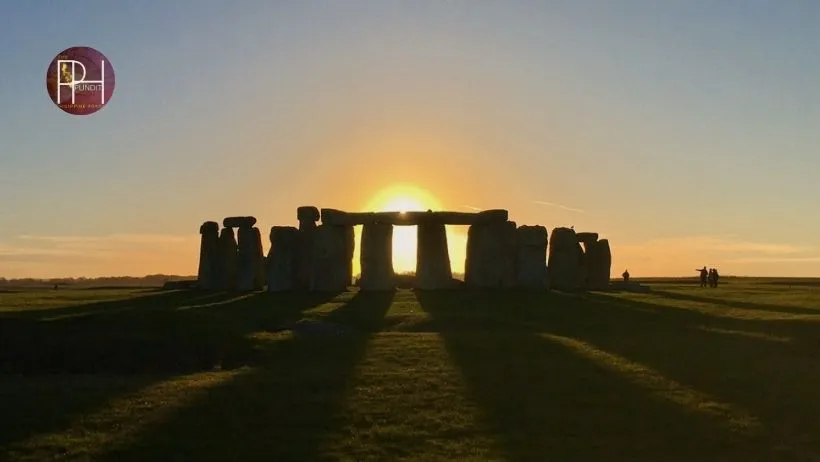🕓 Last Updated: July 11, 2024, 11:49 am (PH time)
Paganism refers to a variety of spiritual or religious beliefs and rituals often centered around nature worship, polytheism, and a connection to ancient traditions. The history of Paganism is extensive and varied, spanning many cultures and periods. Here’s a brief overview:
Table of Contents
Ancient Paganism
Prehistoric Roots
Ancient megalithic constructions like Stonehenge and cave paintings contain evidence that suggests religious rituals that predate modern paganism. Many of these prehistoric faiths were based on seasonal patterns and reverence for nature. In other words, the seasons and environment were major themes in these ancient religions.

Mesopotamian and Egyptian Religions
Gods and goddesses in sophisticated pantheons were revered in ancient cultures such as Mesopotamia (modern-day Iraq) and Egypt.
Ra, Osiris, and Isis were among the gods of Egyptian religion; gods like Anu, Enlil, and Inanna played important roles in Mesopotamian religious culture (Higginbotham & Higginbotham, 2002).
These faiths possessed complex rituals and intricate myths.
Greek and Roman Paganism
The pantheon of gods and goddesses worshipped by Greek and Roman paganism included Zeus (Jupiter), Hera (Juno), Apollo, and Athena (Minerva). Through art, philosophy, and mythology, these religions had a profound influence on Western society (Hamilton, 1942).
Medieval Paganism
Celtic and Norse Traditions
The religious customs of the Norse and Celtic peoples, or Germanic tribes, were sophisticated. The Druids frequently served as intermediaries between the Celts and their gods, such as Brigid and Lugh. With an emphasis on mythology preserved in writings like the “Poetic Edda,” Norse paganism featured gods like Odin, Thor, and Freyja (Sawyer, 2001).
The Decline and Revival of Paganism
Christianization and Suppression
During the period of Christianization in Europe, pagan rituals were generally suppressed or assimilated into Christian rituals. Festivals were reconfigured as Christian feasts (e.g., Christmas and Easter), and pagan temples eventually turned into churches or even destroyed (Hutton, 1999).
Also, in the Middle Ages, the Christian Church began to destroy heretical practices and beliefs, such as paganism. Consequently, all remaining pagan rituals were condemned, hunted down, hated and suppressed.
Neopaganism
Modern Pagan movements like Wicca, Druidry, and Heathenry emerged as an outcome of the 19th and 20th centuries’ resurgence of interest in ancient Pagan rituals (Hutton, 1999).
Among the prominent Neopagan customs are:
- Wicca: Gerald Gardner founded Wicca, a nature-based religion that combines aspects of ceremonial magic, modern esotericism, and ancient paganism, in the middle of the 20th century.
- Druidry: With an emphasis on poetry, ritual, and nature worship, modern druidry aims to restore the rituals and beliefs practiced by the medieval Celtic Druids.
- Heathenry: Reconstructing the pre-Christian rituals and faiths of the Germanic and Scandinavian peoples is the aim of this movement. It is also referred to as Asatru, or Norse paganism.
- Hellenism: A rebirth of classical Greek religion centered on worshiping the Olympian gods and carrying out customary rituals.
- Slavic Native Faith: A reconstructionist movement that aims to bring the Slavic people’s pre-Christian religions back to life.
Conclusion
The key themes and practices of paganism involve the following:
- Polytheism: Faith in several gods and goddesses, each of which is connected to a distinct characteristic of nature or existence, is a common practice among Pagan cultures.
- Nature Worship: The core element of many pagan rituals is a profound respect for the forces of nature and its calendar of cycles.
- Ritual and Magic: To achieve harmony with the forces of nature and the divine, paganism frequently employs rituals, ceremonies, and magical activities.
- Ancestral Veneration: A crucial component of many pagan rituals includes paying reverence to one’s forefathers and conserving their connection to one’s ancestral lineage.
The history of paganism is intricate and multifaceted, embodying the many different spiritual expressions of humanity and their changing interaction with the environment. ▲▼
__________________
Full Citations:
Hamilton, E. (1942). Mythology: Timeless Tales of Gods and Heroes. Little, Brown and Company.
Higginbotham, J., & Higginbotham, R. (2002). Paganism: An Introduction to Earth-Centered Religions. Llewellyn Publications.
Hutton, R. (1999). The Triumph of the Moon: A History of Modern Pagan Witchcraft. Oxford University Press.
Ó hÓgáin, D. (2002). The Celts: A History. Boydell Press.
Sawyer, P. (Ed.). (2001). The Oxford Illustrated History of the Vikings. Oxford University Press.
OpenAI. (2024). Information on the history of Paganism. Retrieved from ChatGPT. https://chat.openai.com/chat
The views and opinions expressed in this article are those of the author and do not necessarily reflect the official policy or position of any affiliated organization, employer, or institution. The author bears sole responsibility for the content.
📩 Subscribe to The Philippine Pundit
Stay updated with the latest news, insights, and stories. Join our mailing list today!

Regel Javines is the independent voice behind the Philippine Pundit. With roots in grassroots work and government service—from open-source research analysis with the Philippine Air Force and news desk duties at The Manila Times, to development and congressional assistance work at Congress—he brings unique insights shaped by philosophy, justice, and lived experience. His mission: to give voice to the unheard and raise questions that stir the soul.
1 Comment